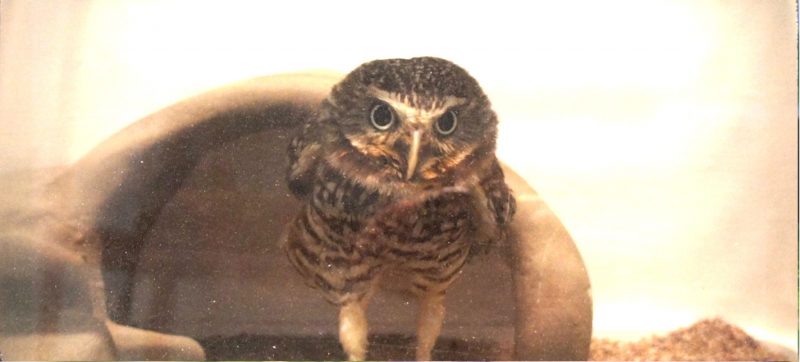Burrowing Owl - Athene cunicularia


Habitat:
Dry, treeless open land; often found in grasslands, desert and prairie
Range:
Found in South America, Southern United States and Mexico year-round. Can be found in Central America in the winter; and in the Central, Northwestern and Western regions of the United States in the summer.
Activity Cycle:
Diurnal
Features:
Body is brown with speckles of white, lower chest is white with brown spots. Females are slightly darker than males. They have long, lanky legs and can flap its wings asynchronously. Burrowing owls do not have ear tufts and are one of the smaller owl species.
Size:
7.5-11 inches in length and weighs 4.5-9 ounces
Social Structure:
They often live in permanent pair bonds, living underground in burrows, sometimes with several pairs in the same area. Pair bond can be retained from one year to the next.
Life Expectancy:
8-10 years
Diet:
Insects, small frogs, lizards and rodents
Reproduction:
In the spring, the female owl will lay 1-12 eggs. The eggs will hatch in about four weeks. Both males and females share responsibility for caring for the young. The young will stay in the nest for about 40 days before leaving.
Status:
Endangered in Canada, threatened in Mexico, listed as a "species of special concern" in the United States.
Interesting Facts:
- Nests underground, they will dig their own burrows or take over a burrow made by another animal.
- Burrowing owls line their burrow with mammal dung to attract insects and maintain burrow temperature.
- Owlets in the nest have the ability to mimic rattlesnakes in order to scare away predators.

AZA cooperatively manages this species as a Species Survival Plan® Program.
Prices
- Adult (13 and over)$12.50
- Child (2 - 12)$9.00
- Child (1 and Under)FREE
- Senior (65+)$11.50
- Active Military$11.50
We begin transferring animals to evening (off exhibit) holding at 4:30 each night.
Find Us
2320 N. Prospect Rd.
Peoria, IL 61603
Phone: 309-686-3365
Open Daily 10:00-5:00
Last admission at 4:30
